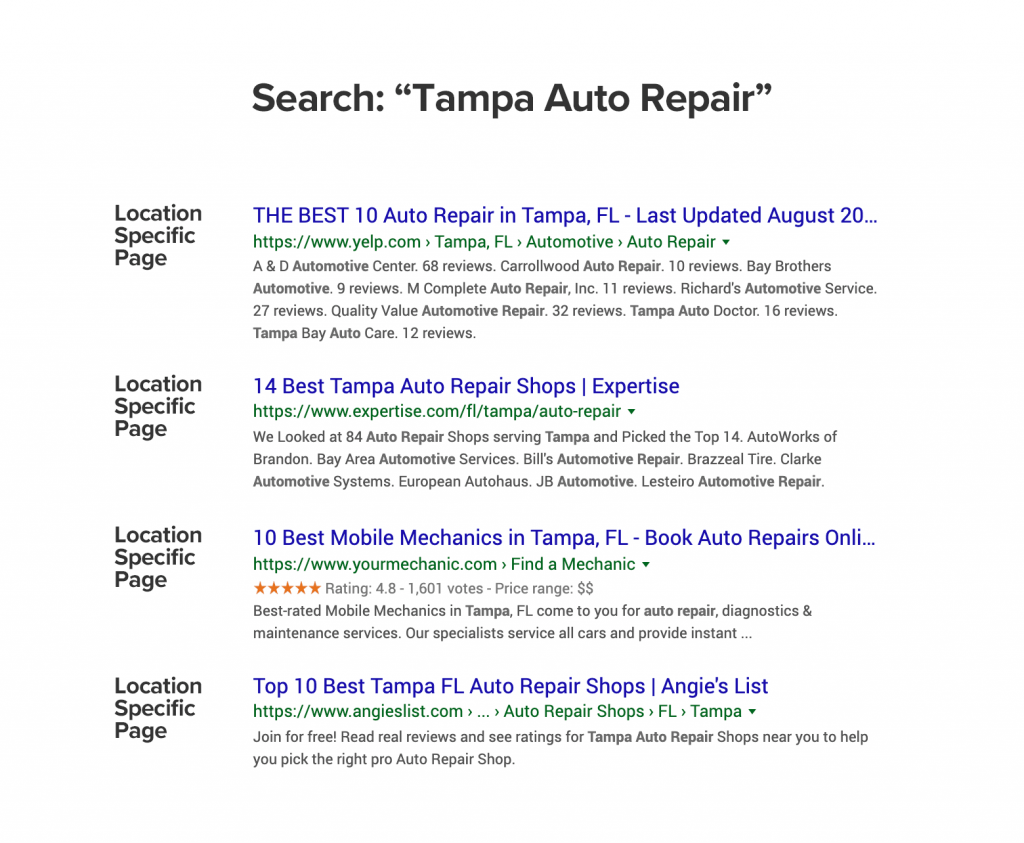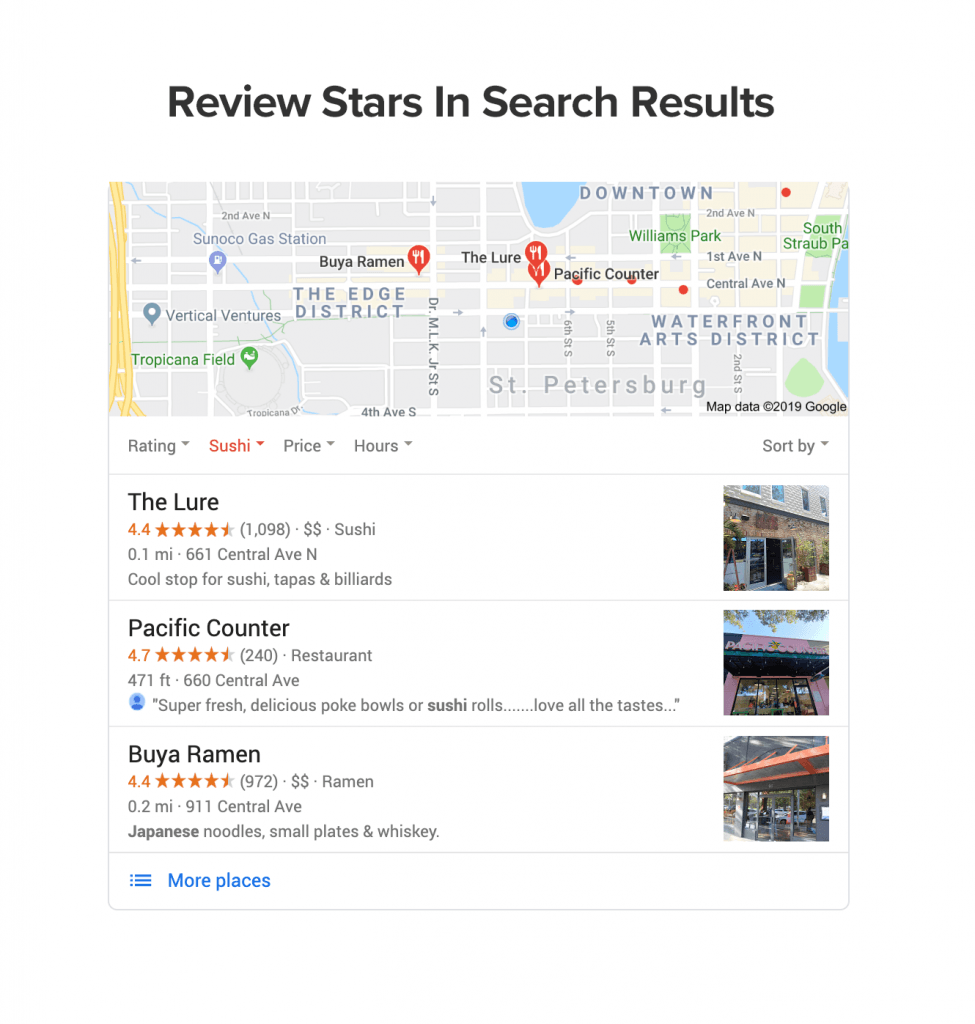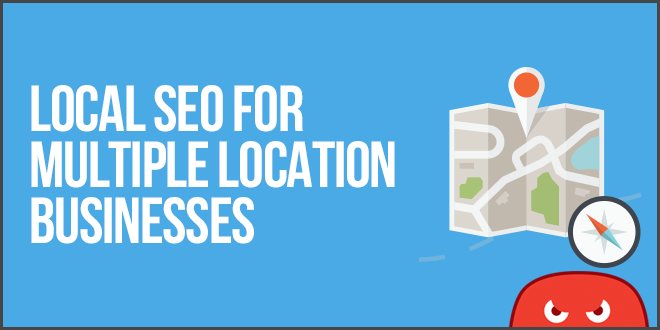Quick Links
Want to know how to do SEO for a business with multiple locations? This post has you covered!
With just a little time and effort, you can start cashing in on the customers in your area who are ready to purchase right now.
Did you know that a whopping 46% of all searches on Google are local?
Yep, you read that right. Nearly half of ALL Google searches revolve around local businesses.
In other words, if you don’t already have local SEO setup for the multiple locations of your business, you are missing out on massive traffic and sales.
But… what if I told you that with a few simple changes to your website, you could be easily and organically attracting more targeted traffic to your store?
Wouldn’t it be nice if your local store was the one showing up for that person who is ready to buy?
Whether it’s a client’s business or yours, this step-by-step guide will show you how to dominate local search for a multiple-location business.
Let’s get started!
What is Multiple-Location SEO?
If you have multiple locations or service multiple areas, you can set your website up in a certain way to maximize your search traffic and user experience.
You’ll want to follow this strategy if any of the following apply:
- You have multiple physical stores or locations
- You serve multiple areas (even if you don’t have a physical store)
- You are a directory that aggregates local businesses
Whether you have 2 locations or 2000, it’s crucial to present Google and the other search engines with the right information.
Doing so allows the search engines to distinguish between the different locations, and present the right one to people who search for it.
Are you ready to learn how to do SEO for a multiple-location business?
Let’s get into it!
1. Build Out Pages For Each Location
One of the biggest problems we see is simply not building out separate pages for each location.
Often websites will try to rank their homepage for multiple locations or put all locations on a single page.
These are not optimal because each page of your website should be about 1 thing. And when you build out dedicated pages, you have way more chances to rank!
You might be thinking, “Isn’t this really necessary? I’m probably going to have lots of pages that say almost the same thing!”
The answer is a resounding YES. You need location-specific pages. Do a search in Google for the term you want to rank for and you’re almost guaranteed to see location-specific pages ranking.

In the above example, you can see that each of these pages that are ranking are specifically about auto repair in 1 location.
The easy way to fix this is to simply build out pages for each location that you serve.
Creating a logical URL structure
By creating a logical site structure with your URLs, your site will be very organized, easy to navigate for users, and easy to understand for search engines. Plus, you can maximize your chances of ranking!
An example of one way to do this for a business with many locations across multiple states could be:
yourbiz.com/locations/ for a list of all the locations
yourbiz.com/locations/florida/ for a list of all the locations in a particular state
yourbiz.com/locations/florida/tampa/ for a list of locations in a city
yourbiz.com/locations/florida/tampa/location-name1/ for store #1
yourbiz.com/locations/florida/tampa/location-name2/ for store #2 in the same city
Be sure to make the URL geo-specific whenever it makes sense.
If store #1 is located in a strip mall called Grand Plaza Mall, or at the intersection of 5th St. and Elm St. then the URL could be:
yourbiz.com/locations/florida/tampa/Grand-Plaza-Mall
Alternatively, you could make it a page for the service that you offer
yourbiz.com/locations/state/city/widget-repair
Whatever way you decide to structure your URL’s, keep their organization tidy by sticking to one system that makes sense.
You want to make sure that your individual pages can be indexed by Google and other search engines.
2. Optimize Each Location Page For SEO
After you’ve created the pages, you need to optimize them so Google understands what each page is about.
You’ll first want to include your keywords in the title tag and meta description.
This is the piece of code on every page that suggests what Google should display in the search results.

Tip: If you’re using WordPress for your website, you can use a simple plugin like Yoast to modify your title tags.
In the example above, you can see the title tag includes both the description of the service as well as the location.
The meta description also includes the location and the service and entices the user to click on the result.
3. Optimize the Content for Each Location
After you’ve created the pages and optimized the title tags & descriptions, you’ll want to add localized content to the page!
Many location pages make a big mistake by not adding much content, so make sure you add everything that a user would want to know.
What content should you add to these pages?
Here are some ideas to consider:
- Service Descriptions: Describe the services that you offer. If you offer a variety of different services, consider creating a new page for each.
- Common Questions: Add commonly asked questions and answers about your services.
- Photos: Add photos of the location or your work in the area. .
- Reviews: Reviews are crucial to capturing customers with a strong intent to make a purchase. Searches for “[your brand] [city] reviews” are sure to occur. These people are seriously considering your business, they just want to hear what other customers have to say about it.
- Directions: Add instructions for getting to your business from each cardinal direction (starting with the highway exit). Embed a map with your location pinned as well.
If you’d like some help building out your content, be sure to check out our copywriting product, HOTH Web Copy.
4. Create A Google My Business Profile for Each Location
Google My Business is Google’s service for helping control how your business appears on Google & Maps.
By claiming and optimizing your profiles for each location, you can take control of your presence!
We put together a huge guide on everything you need to know about Google My Business here.
The good thing is if you have multiple locations, it’s easy to keep everything organized. You can use the same account to manage all the locations.
If you have more than a few locations, you can even use the bulk upload spreadsheet and import them into GMB simultaneously using the import tool.
Triple-check your work before uploading. It’s easier if you get it loaded in right the first time!
5. Build Local Business Listings For Each Location
Getting listed in local directories for each location is an important part of getting maximum visibility with SEO.
You’ll want to make sure you’re listed on all the popular sites for your niche, and that your information is accurate.
The combination of your name, address, and phone number is referred to as a NAP, or NAP citation.
When Google sees the presence of your NAP combination on multiple websites, that is a positive signal for SEO.
On the flip side, Google often pulls inaccurate or outdated NAP’s from aggregator sites, resulting in what they see as a discrepancy between their information about your business and what’s on your website.
You’re better off keeping Google happy by managing your citations. Citation inconsistencies are the top issue affecting local SEO.
Our Ultimate Guide to Local SEO has an in-depth section on building NAP citations that you’ll want to check out for a full tutorial.
6. Get Reviews for Each Location
Did you know that 85% of consumers trust online reviews as much as a recommendation from a friend or acquaintance, and 49% of consumers look for at least a four-star rating before choosing a business?
Reviews are now featured prominently in many search results, especially search results that trigger map pack listings.

We wrote a huge post on how to get more reviews here.
Additionally, if you want some help with this, you might be interested in our review management software HOTH Stars.
Conclusion
By following this strategy for multi-location SEO, you’ll be able to rank for more terms and get more customers!
Creating unique content for each location and service page can be time-consuming, but it’s worth it if you’re serious about investing in your SEO. If you’d like to speed up the process, check out our done-for-you copywriting service, HOTH Web Copy.
We offer digital marketing solutions for different industries. Read about how we’ve helped law firms, dental offices, contractors, and more.
Do you have any questions about doing local SEO for multiple locations? Have a story or strategy to share? Let us know in the comments below!









Great review tips. Also, make sure you are using the Q&A section built into Google. I have a feeling it will be a source for voice answers in the future.
Definitely, the questions being asked in Google are absolutely tied to voice search.
hi there,
is there any local citation list you have?
thanks
Hey Andrew,
I’d recommend checking out this page:https://www.thehoth.com/local/ and then scheduling a consultation for further details!
What if you are a single location business, that services multiple geographic areas?
In that case, you might benefit from setting up individual pages with content informing how you serve each geographic location.
Great article and advice. If we are a one-location business serving multiple areas/neighborhoods, should I build out separate pages for each zip code? If the answer is yes, how unique does the content on each location page need to be other than the targeted location keywords?
Most of the time people don’t search using zip codes, but they will search using the names of areas / neighborhoods. You can build out separate pages for those. In a perfect world, the content would be unique, but you can actually get away with very similar / re-written content on these local pages.
…well here’s a genuine question for anyone that can shed some light 🙂
We recently got a new (second) location listed on Google business… BUT it’s a virtual office where we’re not there all the time, but we swing by to get mail occasionally. So I understand now that I should have a second location page for this on my website, but are there any downsides [that you guys know of] to such setup? Hope this makes sense and looking forward to the answers. Thx
Hi Jason! How far away is your virtual office’s address from your other location’s address? There shouldn’t be a downside to setting both up, but if you’re providing services outside the office you can actually set the radius for your service area around each of your two business addresses to take advantage of both locations. Check out Google’s instructions for this here.
I know this article is over a year old, but I have a question I have not seen addressed anywhere. I have a client that is a single location business that is adding a second location. Currently, the home page is the page that is ranking locally for the single location. When I add the new location page, should I add a page for the existing location, or continue to use the home page for the original location? Thanks in advance.
Hey! There are a few ways to look at this. In the long run, adding a page for each location should help you from an SEO perspective and will better organize your site.
Hi Clayton,
But while doing a business listing for each location, google would ask to send pin verification code which could be time taking process ? Any suggestions on this.
It is definitely worth the time!
Getting each location listed will help people easily find you in Google.
Thanks for updating it and Local SEO still works the same as it used to be.
Multiple location SEO was always confusing for me. Thank you for writing this article.
Great Article, It helps for our multi location business.
Great Article, It helps for our multi location business.
Thank you for the information. This content is well-detailed and recommendable.
Wonderful article by far the best that I ever read about how to manage multiple location on SEO.
Great post, Clayton.
Multi-location SEO has always been a pretty complicated thing, even for professional SEO’s.
Thanks for writing this valuable piece of content for us.
Thank for this article, but i am little confused should I create page for multiple location or should I buy new domain for multiple location?
If it’s the same business, you can just create multiple pages on the same site. 1 for each service / location.
Thanks Clayton for your advice, I have same business like digital marketing agency and I bought new domain for different country like usa, uk,nz etc, is it worthy for me ? or should I create country wise page on my previous website?
Thank you so much for your reply, Its a same so I will implement it as per your advice. Thanks
Hi Clayton, thank you for the article. My company currently has 3 locations and I did create a location page for each office. But, I’m wondering if it’s much more effective to just create a different site for each location? For example: http://www.mycompanya.com, http://www.mycompanyb.com, and http://www.mycompanyc.com instead of http://www.mycompany.com/a, http://www.mycompany.com/b, and http://www.mycompany.com/c? Thank you so much.
You don’t need to create a new website for each – just a new page. That way you can use the full extent of your domain authority, and don’t have to start from scratch each time.
Great article, but you did not mention the best method for linking to these pages?
Do you just put them in a logical menu structure or just link to locations from the home page?
If you have a small local site (a handful of locations) you can do both. If you have a larger / national site, it may make more sense to just keep your homepage and menu navigation simple, then internally link from your key pages.
This is by far the most comprehensive guide on Local SEO that I have come across! Thanks for the amazing post!
hi Clayton,
nice article and also very help full for local businesses. sir, I want to know that is it possible to register to google my business for a blog that provides information on a different online topic.
If it is possible then please tell me how it is possible?
In first point you said that create multiple pages with same content, just change the location but my query is creating same content again & again is also a bad practice in seo. Please elaborate.
Point #3 speaks to your question a bit, but to clarify, in a perfect world you would have completely original content for each page. In reality, I have seen lots of well-ranking multi-location websites get away with tweaking the content, rewriting it, or similar and adding in localization to each page (reviews, pictures, directions, case studies, etc).
Thank you for your information but I want to know exactly, is it right data that 46% search from the local?
Hi sir,
Can we use same content with different url and location names for multiple location pages?
I seen many websites doing it.
Is it good for long term?
What a wonderful blog! Thanks for this information.
Great content! Thanks for explaining multiple location SEO. I am visiting the hoth 1st time. I am new in the SEO field. I will keep visiting.
Hey John,
Thanks for stopping by, and for the feedback. Glad you found this post useful, and we’re looking forward to seeing more of you!
knowledgeable content
A wide discourse – Your Blog – Adding Value to the Community & Industry as well – Keep our Feedback as value readers! Thanks for sharing